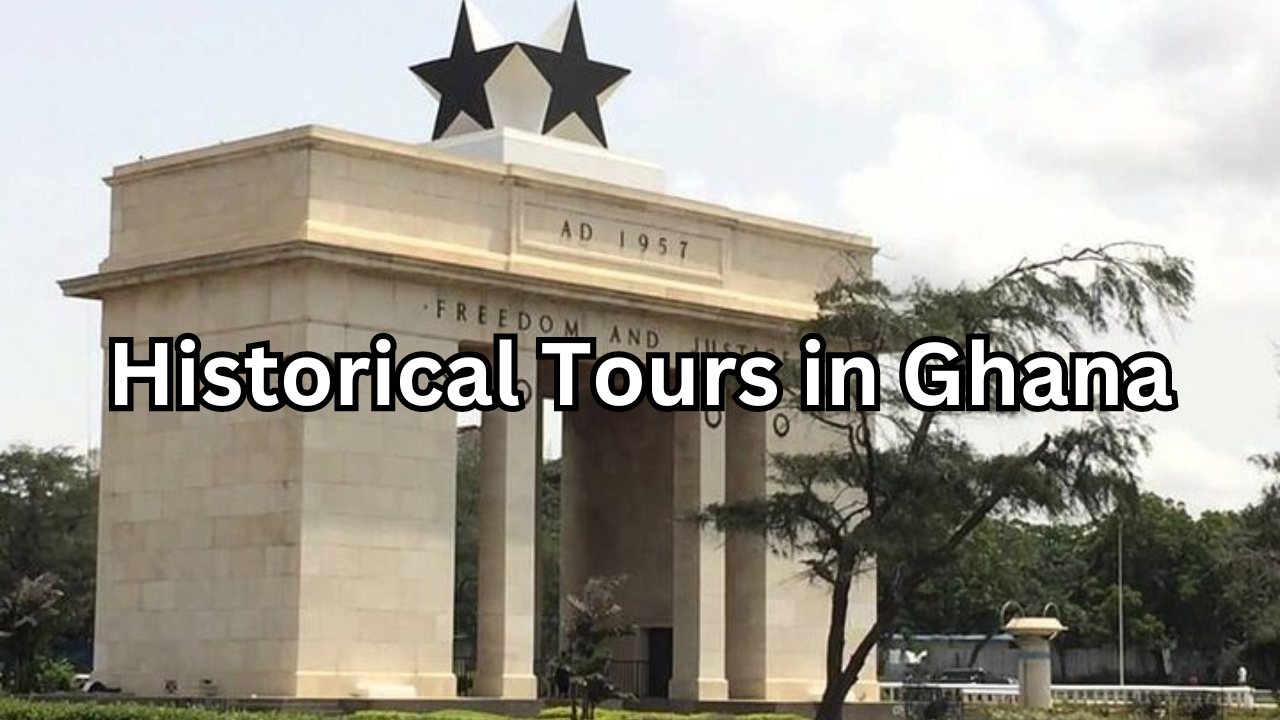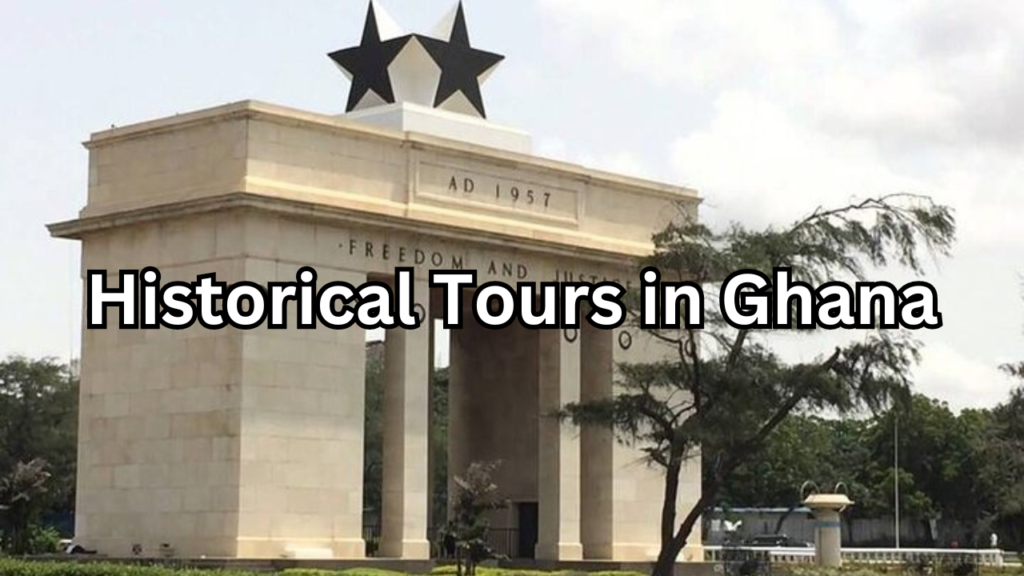
Table of Contents
Introduction:
Historical Tours in Ghana, a land of vibrant culture and storied history, beckons travelers to delve into its rich past through a tapestry of historical tours. Nestled on the shores of West Africa, Ghana stands as a testament to resilience, cultural diversity, and a poignant narrative shaped by centuries of triumphs and challenges. From ancient civilizations to colonial legacies and the struggle for independence, each stone of Ghana’s historical landmarks whispers tales of bravery, tragedy, and the enduring spirit of its people.
Embarking on a historical tour in Ghana is not just a journey through time but a profound exploration of humanity’s collective heritage. Through the echoes of Cape Coast Castle’s dungeons, the regal halls of Kumasi’s Ashanti Kingdom, and the bustling streets of Accra, visitors can witness firsthand the layers of history that have shaped modern Ghana. These tours offer more than mere sightseeing; they are gateways to understanding the cultural mosaic that defines this vibrant nation.
Join us as we embark on a captivating exploration of Ghana’s historical tours, where each step unveils a chapter of a compelling narrative that continues to resonate across continents and centuries.
Brief Introduction to Historical Tours in Ghana:
Nestled along the Gulf of Guinea, Ghana embodies a tapestry of history and cultural diversity that spans millennia. From ancient kingdoms like the Ashanti and Dagbon to the colonial influences of European powers, Ghana’s landscape is dotted with remnants of its storied past. As the first sub-Saharan nation to gain independence in 1957, Ghana holds a pivotal role in Africa’s modern history, standing as a beacon of liberation and Pan-Africanism.
Importance of Historical Tours in Understanding Ghana’s Past:
Historical tours in Ghana offer a compelling lens through which visitors can unravel the layers of the nation’s past. These tours provide immersive experiences, allowing travelers to walk in the footsteps of ancient warriors, trace the harrowing journeys of enslaved Africans, and witness the resilience of a people who have preserved their traditions amidst centuries of change. By exploring landmarks such as Cape Coast Castle and Elmina Castle, visitors confront the harsh realities of the transatlantic slave trade, gaining a deeper appreciation for Ghana’s role in global history.
Moreover, tours of cultural hubs like Kumasi and Accra offer insights into Ghana’s vibrant traditions, from colorful festivals to intricate craftsmanship. By engaging with local communities and visiting sites like the Manhyia Palace Museum or the Kwame Nkrumah Mausoleum, travelers gain a nuanced understanding of Ghana’s journey from ancient times to its emergence as a modern African nation.
In essence, historical tours in Ghana are not just about visiting monuments; they are opportunities to connect with the spirit of a nation shaped by triumphs, struggles, and a profound sense of identity. Each tour unveils a chapter of Ghana’s narrative, fostering cultural exchange and a deeper appreciation for the resilience and diversity that define this dynamic country.
Cape Coast Castle Tour:
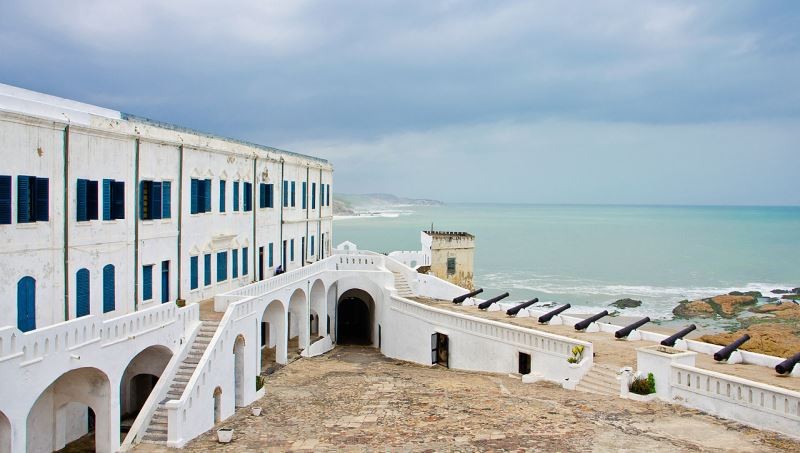
Stepping onto the grounds of Cape Coast Castle is to confront a pivotal chapter in Ghana’s history—one that reverberates through time with profound significance. Situated along the Atlantic coast, this UNESCO World Heritage site stands as a solemn reminder of Ghana’s role in the transatlantic slave trade, a period marked by tragedy and resilience.
Overview of Cape Coast Castle:
Built by the Swedish in 1653 and later expanded by the British, Cape Coast Castle served as a fortress for European powers engaged in the lucrative trade of enslaved Africans. Its strategic location made it a hub for commerce and an epicenter of human suffering, as millions of Africans were forcibly transported through its gates under harrowing conditions.
Historical Significance:
The castle’s dungeons, with their cramped quarters and haunting echoes, bear witness to the unimaginable hardships endured by those awaiting the transatlantic journey. The “Door of No Return,” a poignant symbol of loss and departure, marks the final passage through which enslaved Africans exited to board ships bound for the Americas and Europe.
Tour Highlights and Experience:
Visitors to Cape Coast Castle embark on a poignant journey of remembrance and reflection. Guided tours lead through the castle’s corridors, courtyards, and underground dungeons, where exhibits and narratives detail the castle’s history and the impact of the slave trade on Ghana and the world. The castle’s architecture, with its stark juxtaposition of opulence and oppression, vividly portrays the dualities of human history.
Conclusion:
A Cape Coast Castle tour is not merely a historical excursion but a profound encounter with the resilience of the human spirit and a solemn tribute to those whose lives were forever altered within its walls. It serves as a poignant reminder of Ghana’s enduring journey towards freedom, justice, and reconciliation in the face of a dark and complex history.
Elmina Castle Tour:
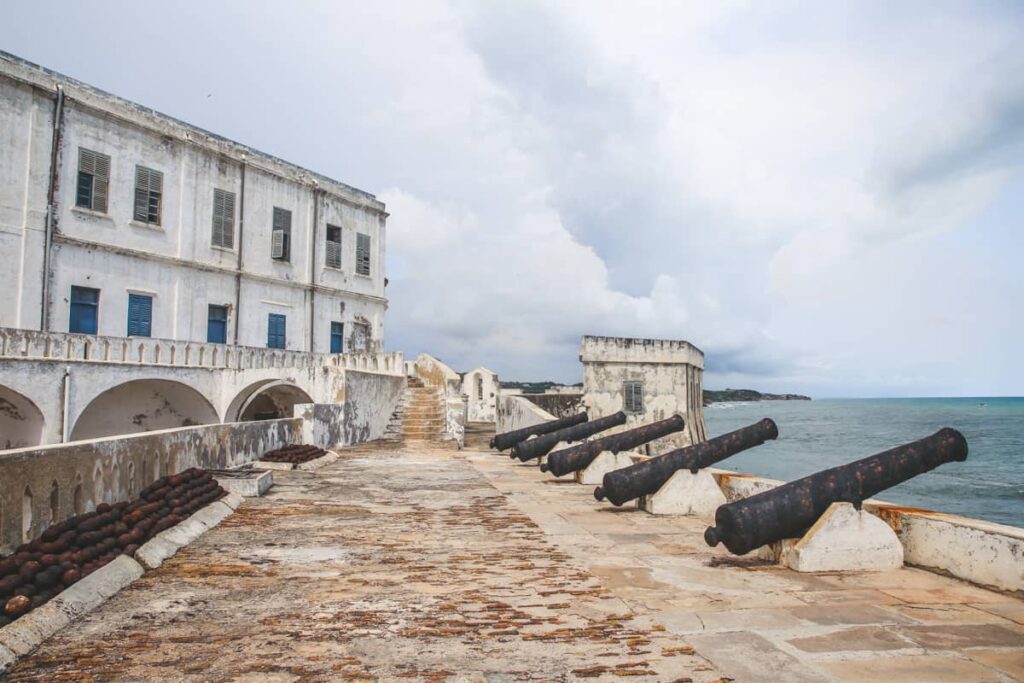
Nestled along Ghana’s Atlantic coastline, Elmina Castle stands as a powerful testament to the intertwined histories of Africa and Europe, marked by both commerce and tragedy. Built by the Portuguese in 1482, Elmina Castle is not only one of Africa’s oldest European-built structures but also a UNESCO World Heritage site that bears witness to centuries of colonialism and the transatlantic slave trade.
Overview of Elmina Castle:
Originally established as a trading post for gold and ivory, Elmina Castle later became a pivotal stronghold for the Portuguese, Dutch, and British in their quest for dominance in the West African region. Its strategic location facilitated the brutal trade of enslaved Africans, who were held captive within its walls before being shipped across the Atlantic.
Historical Significance:
Elmina Castle’s dungeons, cramped and suffused with darkness, serve as a chilling reminder of the horrors endured by countless Africans during the era of the transatlantic slave trade. The castle’s role extended beyond trade; it symbolized the brutal subjugation and exploitation of African peoples, leaving an indelible mark on Ghana’s history and the global consciousness.
Tour Highlights and Experience:
A tour of Elmina Castle immerses visitors in a journey through time, guided by knowledgeable interpreters who recount its storied past. The tour typically includes exploration of the castle’s various chambers, from the governor’s quarters to the female dungeons, each revealing facets of life and suffering within the castle walls. The poignant “Door of No Return,” through which enslaved Africans departed for the Americas, stands as a solemn testament to loss and resilience.
Conclusion:
An Elmina Castle tour is a transformative experience that prompts reflection on the enduring legacy of slavery and colonialism in Africa. It serves as a poignant reminder of Ghana’s resilience and the ongoing quest for justice and reconciliation in the face of historical injustices. By exploring Elmina Castle, visitors engage with a profound narrative of human endurance, cultural heritage, and the imperative of preserving memory for future generations.
Kumasi City and Ashanti Region Tours
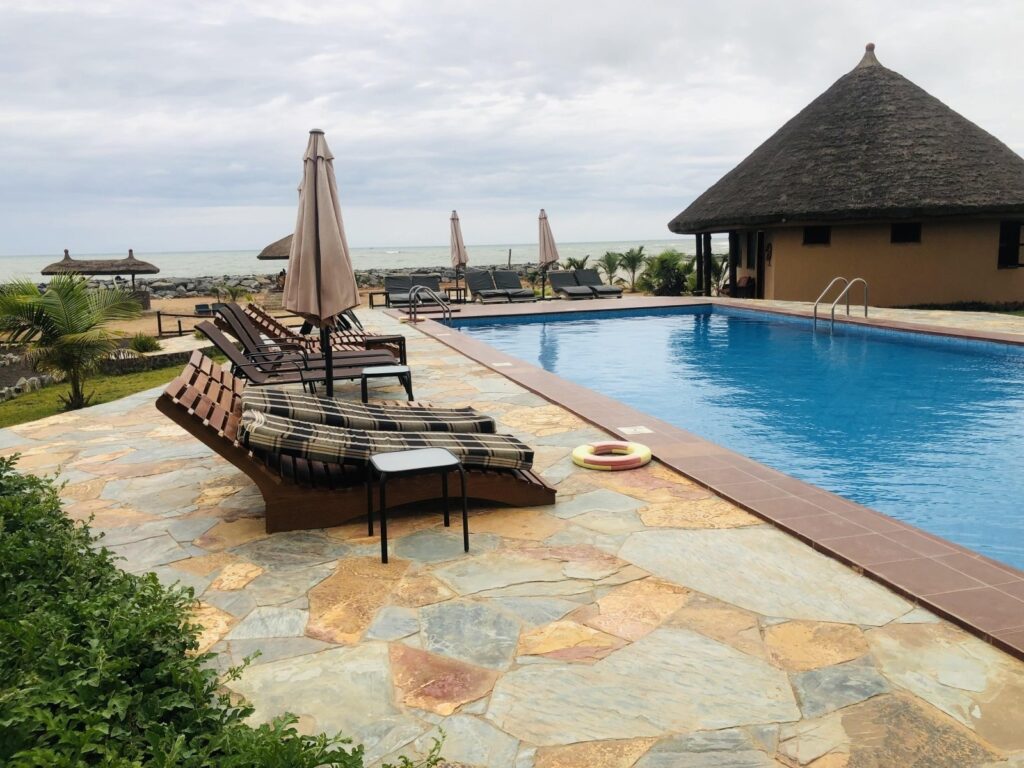
The city of Kumasi and the Ashanti Region beckon travelers with a vibrant tapestry of history, culture, and tradition deeply rooted in Ghana’s rich heritage. As the cultural heartbeat of the Ashanti Kingdom, Kumasi offers a captivating glimpse into both the ancient and contemporary aspects of Ghanaian life.
Overview of Kumasi:
Kumasi, Ghana’s second-largest city, serves as the capital of the Ashanti Region and a custodian of the Ashanti people’s cultural legacy. It is renowned for its bustling markets, traditional crafts, and significant historical sites that reflect the kingdom’s past glory and resilience.
Manhyia Palace Museum:
A tour of Kumasi often begins with a visit to the Manhyia Palace Museum, the seat of the Ashanti monarchy. Here, visitors gain insights into the rich history of the Ashanti Kingdom through artifacts, regalia, and exhibits that illustrate the kingdom’s governance, traditions, and role in Ghanaian history.
Ashanti Craft Villages:
Kumasi is also a gateway to several renowned craft villages, each specializing in traditional craftsmanship that has been passed down through generations. Bonwire is famed for its intricate Kente weaving, where visitors can witness the meticulous process of creating these colorful cloths. Ntonso is known for its Adinkra cloth, adorned with symbols representing proverbs and cultural beliefs.
Cultural Festivals:
Throughout the year, Kumasi comes alive with vibrant cultural festivals such as the Akwasidae and Adae celebrations, which honor ancestors and showcase traditional dances, music, and ceremonies. These festivals offer visitors a firsthand experience of Ashanti traditions and the community’s deep spiritual connection.
Conclusion:
Exploring Kumasi and the Ashanti Region through guided tours provides a multifaceted understanding of Ghana’s cultural diversity and historical depth. From the regal splendor of the Manhyia Palace to the bustling craft villages and lively festivals, each experience offers a window into the resilience and vibrancy of the Ashanti people’s cultural heritage. A journey through Kumasi and the Ashanti Region is not just a tour but an immersion into the heart and soul of Ghanaian identity, where tradition and modernity harmoniously coexist.
Accra Historical Tour
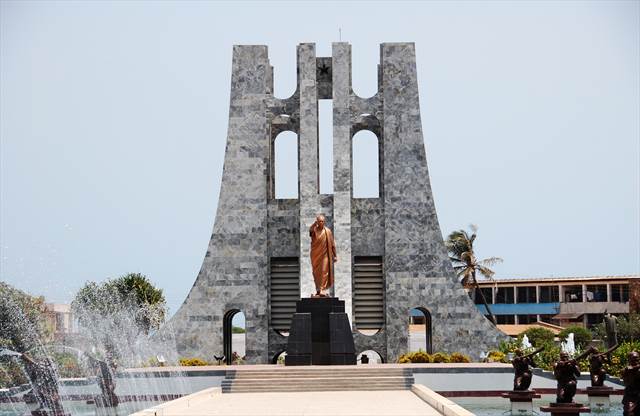
Embarking on a historical tour of Accra, Ghana’s bustling capital, is a journey through time that unveils the city’s pivotal role in the country’s struggle for independence and its vibrant cultural heritage.
Overview of Accra:
Accra serves as Ghana’s political and economic hub, a vibrant metropolis that blends modernity with traces of its colonial past. Founded in the 17th century by the Ga people, Accra has evolved into a dynamic city that reflects Ghana’s journey from ancient kingdoms to independence and beyond.
Independence Square:
A tour of Accra often begins at Independence Square, a historic landmark that symbolizes Ghana’s attainment of independence from British colonial rule on March 6, 1957. The square is adorned with the Independence Arch and hosts national celebrations and events, embodying Ghana’s sovereignty and pride.
Kwame Nkrumah Mausoleum:
Adjacent to Independence Square stands the Kwame Nkrumah Mausoleum and Memorial Park, dedicated to Ghana’s first president and a key figure in the Pan-African movement. The mausoleum houses exhibits chronicling Nkrumah’s life, achievements, and his pivotal role in Ghana’s independence struggle and African liberation.
National Museum of Ghana:
The National Museum of Ghana offers a deeper dive into the country’s cultural heritage, showcasing artifacts, textiles, and archaeological finds that trace Ghana’s history from prehistoric times to the present day. Exhibits highlight traditional Ghanaian art, culture, and the impact of colonialism on the country’s development.
Jamestown and Ussher Fort:
Jamestown, one of Accra’s oldest districts, provides insights into the city’s early history and colonial legacy. Visitors can explore landmarks such as Ussher Fort and the James Fort Prison, which played significant roles in the transatlantic slave trade and later colonial administration.
Conclusion:
An Accra historical tour offers a poignant exploration of Ghana’s resilience, cultural diversity, and the ongoing quest for progress and identity. By visiting landmarks like Independence Square, the Kwame Nkrumah Mausoleum, and the National Museum, visitors gain a deeper understanding of Ghana’s historical evolution, from ancient civilizations through colonialism to independence and beyond. Accra stands as a vibrant testament to Ghana’s enduring spirit and its commitment to preserving and celebrating its rich heritage for generations to come.
Mole National Park Cultural Tours
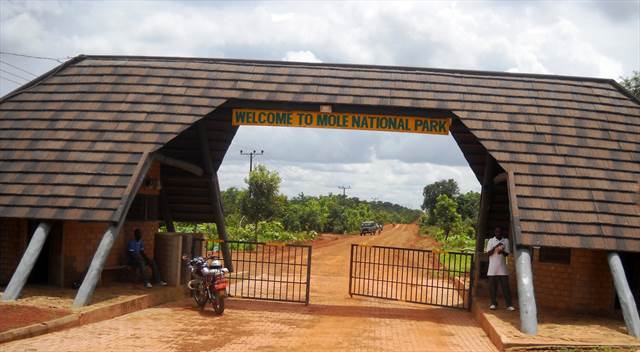
Nestled in the savannah grasslands of northern Ghana, Mole National Park offers not only a sanctuary for diverse wildlife but also a gateway to the rich cultural heritage of the region’s indigenous peoples.
Overview of Mole National Park:
Covering over 4,840 square kilometers, Mole National Park is Ghana’s largest wildlife reserve and a haven for elephants, antelopes, hippos, and a myriad of bird species. Beyond its natural beauty, the park also holds cultural significance, offering visitors a glimpse into the traditions and lifestyles of the local communities.
Cultural Experiences:
Cultural tours within Mole National Park typically include interactions with the diverse ethnic groups that call the surrounding region home. Visitors have the opportunity to engage with communities such as the Dagomba, Mamprusi, and Gonja, learning about their traditional practices, beliefs, and craftsmanship.
Traditional Dance and Music:
One highlight of cultural tours in Mole National Park is experiencing traditional dance and music performances. Local communities often showcase their vibrant cultural heritage through drumming, dancing, and storytelling, providing a lively and immersive glimpse into their rituals and celebrations.
Village Visits:
Guided tours may also include visits to nearby villages, where visitors can observe daily life, participate in community activities, and perhaps even learn traditional skills such as weaving or pottery. These interactions foster cultural exchange and appreciation, allowing visitors to gain a deeper understanding of the challenges and triumphs faced by rural communities.
Historical Insights:
Beyond cultural immersion, Mole National Park offers insights into historical sites and ancient civilizations that once thrived in the region. Ruins and artifacts provide glimpses into past kingdoms and trading routes, connecting visitors to Ghana’s broader historical narrative.
Conclusion:
A cultural tour of Mole National Park is a journey of discovery, blending wildlife encounters with profound insights into the diverse cultures that have shaped northern Ghana. By engaging with local communities, experiencing traditional arts, and exploring historical sites, visitors gain a holistic appreciation for the interconnectedness of nature and culture in this captivating region. Mole National Park stands not only as a conservation success but also as a cultural treasure trove, inviting exploration and fostering appreciation for Ghana’s rich cultural tapestry.
Volta Region Tours
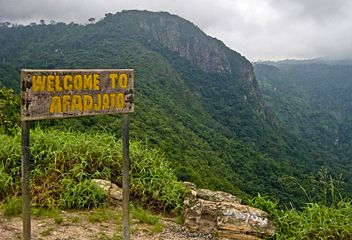
Nestled in eastern Ghana, the Volta Region offers a captivating blend of natural beauty, cultural diversity, and historical significance, making it a must-visit destination for travelers seeking both adventure and cultural immersion.
Overview of the Volta Region:
The Volta Region is renowned for its lush landscapes, rolling hills, serene water bodies, and vibrant communities. It is home to several ethnic groups, each with unique traditions, languages, and cultural practices that contribute to the region’s rich tapestry of diversity.
Wli Waterfalls:
A highlight of any tour to the Volta Region is a visit to the Wli Waterfalls, the highest waterfall in West Africa. Nestled within a tropical rainforest, the Wli Waterfalls offer breathtaking views and opportunities for hiking and birdwatching, while nearby communities share their traditions and folklore.
Tafi Atome Monkey Sanctuary:
For wildlife enthusiasts and cultural explorers alike, the Tafi Atome Monkey Sanctuary offers a unique experience. This community-managed sanctuary is home to endangered Mona monkeys, revered by locals as sacred beings. Visitors can observe these monkeys in their natural habitat while learning about the community’s efforts in conservation and eco-tourism.
Cultural Festivals and Traditions:
The Volta Region is renowned for its colorful festivals and cultural traditions. Visitors may have the opportunity to participate in festivals such as Hogbetsotso, celebrated by the Anlo Ewe people to commemorate their migration from Notsie in present-day Togo. These festivals feature traditional dances, music, and ceremonies that showcase the region’s vibrant cultural heritage.
Volta Lake and Adomi Bridge:
Spanning the Volta River is the iconic Adomi Bridge, offering panoramic views of the Volta Lake, one of the largest man-made lakes in the world. Boat cruises on the lake provide opportunities to explore remote villages, interact with fishing communities, and appreciate the role of the lake in the region’s economy and culture.
Conclusion:
A tour of the Volta Region promises a blend of natural wonders, cultural immersion, and historical insights that highlight Ghana’s diversity and resilience. Whether exploring majestic waterfalls, engaging with local communities, or participating in vibrant festivals, visitors to the Volta Region embark on a journey that celebrates the interconnectedness of nature, culture, and heritage in this captivating corner of Ghana.
Northern Ghana Heritage Tour:
Embarking on a Northern Ghana Heritage Tour is a journey into the region’s rich cultural tapestry, ancient traditions, and historical landmarks that reflect its enduring legacy.
Overview of Northern Ghana:
Northern Ghana is characterized by its vast savannah landscapes, ancient mud-brick architecture, and the warm hospitality of its diverse ethnic communities. The region is home to several ethnic groups, including the Dagomba, Mamprusi, Gonja, and many others, each preserving unique traditions and customs.
Larabanga Mosque:
A highlight of the Northern Ghana Heritage Tour is a visit to the Larabanga Mosque, believed to be one of the oldest mosques in West Africa. Constructed with traditional Sudanese architecture using mud and reeds, the mosque stands as a testament to the region’s Islamic heritage and spiritual significance.
Larabanga Mystery Stone:
Near the mosque lies the Larabanga Mystery Stone, a sacred object surrounded by folklore and legends. The stone is believed to have mysterious powers and serves as a symbol of spiritual beliefs and traditional practices that have endured for generations.
Traditional Villages and Cultural Practices:
Exploring traditional villages in Northern Ghana provides insights into daily life, agricultural practices, and craftsmanship passed down through centuries. Visitors may witness traditional dances, music performances, and rituals that celebrate community spirit and cultural identity.
Historical Insights:
The Northern Ghana Heritage Tour also includes visits to historical sites such as ancient settlements, forts, and remnants of pre-colonial kingdoms. These sites offer glimpses into the region’s political history, trade routes, and interactions with neighboring civilizations.
Cultural Festivals:
Throughout the year, Northern Ghana comes alive with colorful festivals that celebrate harvests, rites of passage, and spiritual beliefs. Festivals like the Damba Festival of the Dagombas and the Fire Festival of the Gonjas showcase traditional attire, drumming, and ceremonial dances that embody the region’s cultural vibrancy.
Conclusion:
A Northern Ghana Heritage Tour offers a profound exploration of Ghana’s northern frontier, blending natural beauty with cultural immersion and historical discovery. By engaging with local communities, experiencing traditional practices, and visiting ancient landmarks, visitors gain a deep appreciation for the region’s heritage and its enduring contributions to Ghana’s cultural mosaic. This journey through Northern Ghana is not just a tour but an enriching experience that fosters understanding, respect, and admiration for the diversity and resilience of its people.
Ada Foah and Volta River Estuary Tour:
Embarking on an Ada Foah and Volta River Estuary Tour offers a serene escape into the natural beauty and cultural richness of Ghana’s eastern coast, where the Volta River meets the Atlantic Ocean.
Overview of Ada Foah:
Ada Foah, nestled along the eastern shores of Ghana, is renowned for its tranquil beaches, lush mangrove forests, and vibrant fishing communities. It serves as a gateway to the Volta River Estuary, a biodiverse ecosystem teeming with wildlife and cultural significance.
Volta River Estuary Boat Tour:
The tour typically begins with a scenic boat cruise along the Volta River Estuary, providing panoramic views of the surrounding mangrove forests, bird sanctuaries, and traditional fishing villages. Visitors can observe local fishermen casting their nets and glimpse rare bird species that inhabit the estuary’s wetlands.
Riverine Culture and Traditions:
During the boat tour, guides share insights into the riverine culture of the local communities, known for their traditional fishing techniques and reliance on the river for livelihoods. Visitors may have the opportunity to visit fishing villages, interact with residents, and learn about their daily lives and cultural practices.
Ecological Diversity:
The Volta River Estuary is a haven for biodiversity, supporting diverse flora and fauna, including crocodiles, monitor lizards, and a variety of bird species. Nature enthusiasts can embark on guided walks through the mangrove forests or birdwatching excursions to spot species such as the African fish eagle and kingfishers.
Ada Foah Beach and Recreation:
After exploring the estuary, visitors can unwind on Ada Foah’s pristine beaches, known for their golden sands and serene ambiance. Water sports enthusiasts can indulge in activities such as jet skiing, kayaking, and boat rides along the Atlantic coastline.
Conclusion:
An Ada Foah and Volta River Estuary Tour offers a harmonious blend of natural beauty, cultural immersion, and recreational activities along Ghana’s eastern coast. By experiencing the tranquil waters of the Volta River Estuary, interacting with local communities, and relaxing on Ada Foah’s picturesque beaches, visitors gain a deeper appreciation for the region’s ecological importance and vibrant riverine culture. This tour provides a refreshing retreat and an opportunity to connect with Ghana’s coastal heritage in a serene and unforgettable setting.
Navrongo Catholic Cathedral and Paga Crocodile Pond Tour:
Embarking on a tour of Navrongo Catholic Cathedral and Paga Crocodile Pond offers a unique blend of spiritual exploration and natural wonder in Ghana’s Upper East Region.
Overview of Navrongo Catholic Cathedral:
Navrongo Catholic Cathedral, located in the town of Navrongo, is a remarkable example of Sudanese-style architecture and a significant religious landmark in northern Ghana. Built in the 20th century, the cathedral stands as a testament to the region’s strong Christian heritage and cultural integration with traditional architectural influences.
Highlights of Navrongo Catholic Cathedral:
Visitors to Navrongo Catholic Cathedral are greeted by its distinctive mud and thatch design, adorned with intricate patterns and symbols that reflect local craftsmanship and cultural identity. Inside, the cathedral’s serene ambiance and vibrant stained glass windows provide a tranquil setting for prayer, reflection, and appreciation of religious artistry.
Paga Crocodile Pond:
Located near Paga, a town renowned for its cultural and ecological significance, the Paga Crocodile Pond is a sacred site where visitors can encounter Nile crocodiles in their natural habitat. According to local beliefs, these crocodiles are revered as sacred totems and guardians of the community, living peacefully alongside humans for centuries.
Cultural Interpretations and Rituals:
Guided tours of the Paga Crocodile Pond offer insights into traditional beliefs and rituals associated with crocodiles in the region. Visitors may witness rituals performed by local priests to honor and communicate with the crocodiles, fostering a deeper understanding of the spiritual connections between humans and wildlife in northern Ghana.
Cultural Exchange and Community Engagement:
Beyond the cathedral and crocodile pond, tours provide opportunities to engage with local communities, learn about their daily lives, and appreciate their traditional arts and crafts. Visitors can explore nearby villages, interact with artisans, and purchase handmade souvenirs that support local livelihoods and cultural preservation efforts.
Conclusion
In conclusion, exploring Ghana through its diverse historical, cultural, and natural landmarks offers an enriching journey that spans centuries of resilience, heritage, and interconnectedness. From the solemn echoes of Cape Coast Castle to the vibrant traditions of Kumasi and the serene beauty of Ada Foah’s estuary, each destination reveals a unique facet of Ghana’s identity.
Historical tours to Cape Coast Castle and Elmina Castle illuminate the harrowing legacy of the transatlantic slave trade, urging reflection on humanity’s past while honoring the strength and spirit of those who endured.
In Kumasi and the Ashanti Region, the Manhyia Palace Museum and traditional craft villages celebrate the artistic prowess and cultural pride of the Ashanti people, inviting visitors to partake in vibrant festivals and witness living traditions.
Accra, Ghana’s bustling capital, offers a blend of colonial architecture and modern vibrancy at Independence Square and the Kwame Nkrumah Mausoleum, embodying the nation’s journey from colonial rule to independence and beyond.
Venturing north, Mole National Park and the Volta Region showcase Ghana’s natural beauty and biodiversity alongside rich cultural traditions. In the north, the Larabanga Mosque and Paga Crocodile Pond bridge spiritual beliefs with ancient customs, offering profound insights into local cultures and their enduring connections to the land.
Finally, the serene waters of Ada Foah and the historical landmarks of Navrongo and Paga provide tranquil escapes and spiritual reflections, highlighting Ghana’s multifaceted allure and the warmth of its people.
Ultimately, touring Ghana is not just a voyage through landscapes and landmarks but a transformative experience that deepens appreciation for Africa’s history, cultural richness, and the resilience of its people. Whether exploring ancient castles or tranquil riverbanks, Ghana welcomes visitors to embark on a journey of discovery, connection, and reverence for the enduring spirit of its heritage.
Recap of the Importance of Historical Tours in Ghana:
Historical tours in Ghana serve as profound gateways to understanding the nation’s complex and multifaceted history. They offer poignant insights into pivotal moments such as the transatlantic slave trade, colonialism, and the quest for independence, revealing the resilience and cultural richness that define modern Ghana. By visiting landmarks like Cape Coast Castle, Elmina Castle, and Accra’s Independence Square, visitors confront the realities of Ghana’s past, fostering a deeper appreciation for its heritage and the global impact of its historical narratives.
Encouragement to Visitors to Explore Ghana’s Rich History and Cultural Diversity:
Visitors to Ghana are encouraged to embark on these historical tours not merely as sightseers but as participants in a journey of discovery and learning. Each tour unveils layers of Ghana’s cultural mosaic, from the vibrant festivals of Kumasi to the serene landscapes of the Volta Region. By engaging with local communities, experiencing traditional arts and rituals, and exploring ancient monuments, travelers forge meaningful connections with Ghana’s past and present. Through these encounters, visitors not only gain a deeper understanding of Ghana’s heritage but also contribute to its preservation and celebration for future generations. Embrace the opportunity to explore Ghana’s rich history and cultural diversity—it promises a transformative experience that resonates long after the journey ends.
